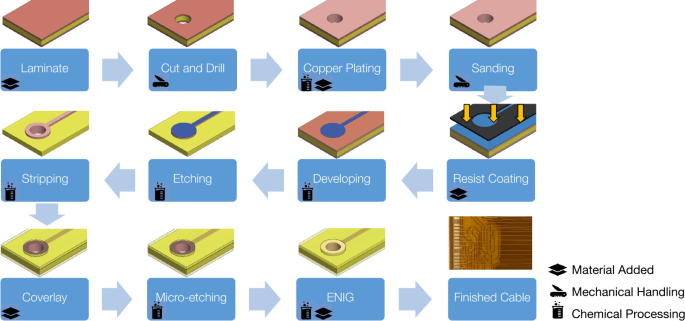超低放射線ケーブルがニュートリノと暗黒物質検出器のバックグラウンドノイズを低減する Ultra-low radiation cables reduce background noise for neutrino and dark matter detectors
2023-09-21 パシフィック・ノースウェスト国立研究所(PNNL)
◆地球上の放射能汚染物質、たとえ1億分の1の濃度であっても、科学者が探している信号を模倣する可能性があるため、次世代のニュートリノと暗黒物質の実験を妨げる可能性があります。
◆研究チームは、ウルトラピュア材料で作成された電子ケーブルを開発し、これらのケーブルが高感度なニュートリノと暗黒物質の実験に干渉しないほど極めて低いレベルの放射能汚染物質を持つように設計および製造しました。
<関連情報>
- https://www.pnnl.gov/news-media/shh-quiet-cables-set-help-reveal-rare-physics-events
- https://epjtechniquesandinstrumentation.springeropen.com/articles/10.1140/epjti/s40485-023-00104-6
超低放射能フレキシブル印刷ケーブル Ultra-low radioactivity flexible printed cables
Isaac J. Arnquist,Maria Laura di Vacri,Nicole Rocco,Richard Saldanha,Tyler Schlieder,Raj Patel,Jay Patil,Mario Perez & Harshad Uka
EPJ Techniques and Instrumentation Published:19 September 2023
DOI:https://doi.org/10.1140/epjti/s40485-023-00104-6

Abstract
Flexible printed cables and circuitry based on copper-polyimide materials are widely used in experiments looking for rare events due to their unique electrical and mechanical characteristics. However, past studies have found copper-polyimide flexible cables to contain 400-4700 pg 238U/g, 16-3700 pg 232Th/g, and 170-2100 ng natK/g, which can be a significant source of radioactive background for many current and next-generation ultralow background detectors. This study presents a comprehensive investigation into the fabrication process of copper-polyimide flexible cables and the development of custom low radioactivity cables for use in rare-event physics applications. A methodical step-by-step approach was developed and informed by ultrasensitive assay to determine the radiopurity in the starting materials and identify the contaminating production steps in the cable fabrication process. Radiopure material alternatives were identified, and cleaner production processes and treatments were developed to significantly reduce the imparted contamination. Through the newly developed radiopure fabrication process, fully-functioning cables were produced with radiocontaminant concentrations of 20-31 pg 238U/g, 12-13 pg 232Th/g, and 40-550 ng natK/g, which is significantly cleaner than cables from previous work and sufficiently radiopure for current and next-generation detectors. This approach, employing witness samples to investigate each step of the fabrication process, can hopefully serve as a template for investigating radiocontaminants in other material production processes.



